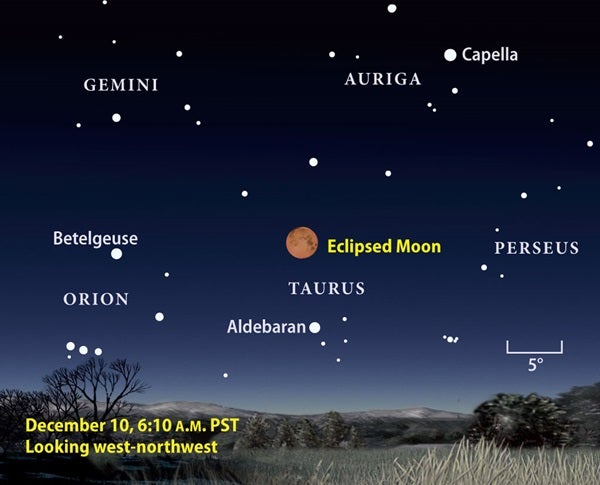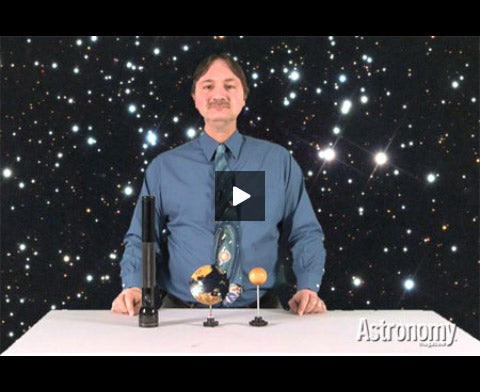The last of the year’s major sky events is a total lunar eclipse December 10. The Moon will put on a great show for people in western North America and across the Pacific Ocean to Australia and Asia.
A lunar eclipse occurs when the Moon in its orbit passes into Earth’s shadow. Because the Sun isn’t a point of light, the shadow has two parts — the inner, darker umbra and the outer, lighter penumbra. If the entire Moon enters the umbra, the eclipse is total. If the umbra hides only part of our satellite, the eclipse is partial.
Unfortunately, on December 10 the Moon sets during the initial partial phases for those in the midwestern United States. And observers east of a line from Ohio to Mississippi won’t see any of the eclipse.
This eclipse begins at 3:34 a.m. PST as the Moon moves into the penumbra of Earth’s shadow. You won’t notice much of a change, however, until just before the partial phase begins at 4:46 a.m. PST. That’s when the dark umbra begins its 1 hour and 20 minute crawl across our satellite’s face. The umbra engulfs the whole Moon starting at 6:06 a.m. PST. The midpoint — called “greatest eclipse” — occurs at 6:32 a.m. PST. From that point, the rest of the eclipse occurs in reverse order. Totality ends at 6:57 a.m. PST when a sliver of the Moon’s bright surface reappears. The partial eclipse finishes at 8:18 a.m. PST, and the event concludes as Luna exits the penumbra at 9:30 a.m. PST.
If you have only a limited amount of time, concentrate on viewing totality. Although that will be the darkest and, therefore, the most impressive phase, the Moon won’t disappear from view. Some sunlight passing through Earth’s atmosphere will fall on the lunar surface. The cleaner our atmosphere is, the “lighter” the eclipse will be. “Dark” eclipses generally occur after large volcanic eruptions when our atmosphere contains more dust.
What color will the Moon turn at mideclipse? During previous total eclipses, the Moon has appeared brown, orange, crimson, and brick red. Lunar eclipses exhibit a red-to-orange range of shades because sunlight passing through Earth’s atmosphere during totality becomes scattered and reddened. It’s this dim glow that fills Earth’s shadow and lights the eclipsed Moon. On December 10, most astronomers expect the totally eclipsed Moon to be bright orange. The sky certainly will grow darker, especially from sites far from city lights. Totality will allow viewers to pick out the bright winter stars closest to our nearest celestial neighbor.
Astronomy magazine Associate Editor Bill Andrews described the upcoming eclipse as an opportunity for some easy observing: “Lunar eclipses are popular events because they require no equipment. If it’s clear where you are, just go outside and take a look.” Andrews also stated that total eclipses of the Moon are completely safe to look at. “All we’re seeing is reflected sunlight,” he said. “So it’s just like looking at an Earth landscape on a sunny day.”
The next two total lunar eclipses occur April 15 and October 8, 2014. And, as the luck of celestial geometry would have it, both will be even better for North Americans than this December’s event.
- Video: How to observe a lunar eclipse, with Michael E. Bakich, senior editor
- StarDome: Get the Moon’s location in your night sky during the eclipse with our interactive star chart.
- Sky this Week: A daily digest of celestial events, by Richard Talcott, senior editor
- Sign up for our free weekly e-mail newsletter.













